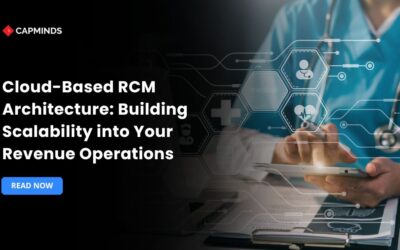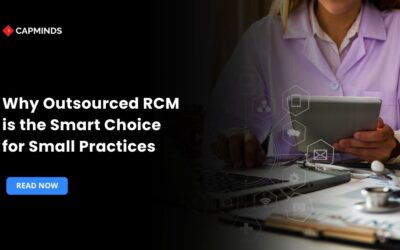How to Streamline Healthcare RCM with Custom Billing Platforms
Efficient Revenue Cycle Management is essential for a healthy bottom line in today’s healthcare environment. Yet many providers still rely on legacy billing systems that create friction at every step. Outdated RCM tools often force billing staff into manual, labor-intensive processes, leading to errors and delays. In practice, disconnected data silos are common: traditional systems rarely share information in real time, so billing teams end up reconciling patient data and claims information by hand.
This fragmentation also hurts visibility – managers can’t get a clear, up-to-the-minute view of accounts receivable or denial trends, because each department is looking at its own outmoded spreadsheets or screens. The result is a slow, error-prone revenue cycle that erodes cash flow and ties up staff time on tasks like claim resubmissions and data entry.
Moreover, scalability is a growing concern. As patient volumes and billing complexity increase, rigid RCM platforms struggle to keep up. One analysis notes that “old manual workflows just don’t scale anymore,” and many systems break under high volume or new business models.
Challenges Associated with Traditional RCM Tools
1. Integration and Interoperability Issues
Many legacy RCM tools operate in isolation. They were never designed for seamless data exchange with EHRs, scheduling software, or payer portals. The result is redundant workflows, and staff must manually re-enter or upload patient and billing data between systems.
- In practice this creates “data silos,” where different departments see incomplete or outdated information.
- Studies show that non-integrated billing solutions require more labor and create visibility gaps that undermine efficiency.
- Without modern APIs or interoperability standards, even routine tasks like insurance eligibility checks or charge capture rely on slow, manual processes, dragging out the entire cycle.
2. Rigid, Manual Workflows
Traditional RCM platforms tend to enforce one-size-fits-all workflows. When unusual or new billing rules arise, these systems cannot be easily reconfigured.
Billing staff resort to cumbersome workarounds: maintaining parallel tracking spreadsheets, calling payers manually, or handling exceptions offline.
- In essence, most legacy systems “force clinics to adapt their workflows to rigid rules,” which can leave revenue on the table.
- These manual processes are labor-intensive and error-prone.
For example, teams may have to verify co-pays at check-in manually, enter charges by hand, and chase claims individually, all of which slow down collections. As one expert put it, outdated systems “lack flexibility” and often create a “rigid structure with limited flexibility”.
3. Poor Data Visibility
When RCM data is scattered across unconnected systems, finance leaders lack a comprehensive view of performance. Key metrics like days-in-AR, denial rates, or cash forecasting become almost impossible to track in real time.
- For instance, if billing and clinical data aren’t integrated, predictions of expected reimbursement or identification of claim hold-ups are delayed.
- Modern RCM philosophy holds that “executives now expect real-time visibility into the financial health of their operations”.
By contrast, legacy setups force teams into reactive mode – only noticing trends after they occur, if at all. In practice, organizations find that “disconnected systems hinder the flow of information” and leave executives working with “outdated insights”.
Without unified data and dashboards, spotting a slow-paying insurance plan or a suddenly spiking denial rate can be sheer guesswork.
4. Limited Scalability
As a practice grows or adds services, billing needs expand dramatically. A standard RCM tool that handled yesterday’s patient volume may choke on tomorrow’s.
Cheaper standalone systems often advertise today’s functionality but fail to support additional users, revenue streams, or multi-site configurations. When new clinics come online or the billing case mix changes, these systems require expensive upgrades or complete replacement.
5. Complex Patient Billing
Modern healthcare finance places more responsibility on patients. Explaining co-pays, deductibles, and payment plans is harder through legacy tools.
Traditional Revenue Cycle Management systems usually have minimal patient-facing portals or billing transparency features, leaving patients confused by unclear statements. In practice, this leads to billing disputes and slow patient payments.
- For example, healthcare providers report that managing “large amounts of patient data” and multiple payer requirements can cause errors and long wait times for patients.
- Patients expect at least the same billing convenience as online shopping or retail bills; outdated systems simply can’t offer flexible payment portals, automated reminders, or clear balance estimates. The fallout is more calls to the office, more write-offs, and lower patient satisfaction.
6. Compliance and Regulatory Burdens
Healthcare billing is governed by a web of rules that change constantly. Legacy systems usually offload compliance management to staff. This means teams must manually track code changes, audit logs, and privacy requirements. As one industry guide notes, the “ever-evolving set of regulatory requirements” makes billing very challenging.
In practice, outdated RCM workflows often lack built-in checks, so catching a missing signature or an expired authorization often happens only after a claim is denied or a breach is detected.
Staying compliant with HIPAA and CMS mandates often feels like a full-time job. Any lapse can lead to audit penalties or denial fines. In short, conventional RCM solutions tend to amplify the compliance burden, rather than streamline it.
7. Inefficient Claims Processing
Legacy billing platforms typically handle claims in batches with limited validation. Without modern rules engines, even small errors snowball: typos in CPT codes, mismatched modifiers, or unverified patient info routinely cause denials. As one industry analysis observes, outdated RCM “focuses on reactive problem-solving” and suffers rising denial rates. In real-world terms, this means billing staff spend huge amounts of time fixing rejected claims and resubmitting them.
The result is slower cash flow: denied claims sit in a backlog while staff chase documentation. Studies have found that denial rates are increasing under traditional workflows, often due to insufficient validation.
Related: RCM Best Practices: How to Optimize Billing and Reimbursement in 2025
Benefits of Custom Billing Platforms
Modern custom RCM platforms are designed to solve all of the above challenges by construction. By building the system around an organization’s exact needs, custom billing solutions deliver a new level of efficiency and insight. Modern vs Traditional RCM features. Custom-built RCM platforms rely on real-time API integration and automation, unlike legacy systems.
These platforms connect billing, clinical, and payer systems seamlessly, so processes that used to be manual happen automatically behind the scenes.
In effect, a custom solution turns RCM into a truly interoperable operation: EHR data flows directly into the billing engine; insurance benefits are checked live via APIs instead of phone calls; and payments and remittance advice update the system instantly.
The benefits of this approach can be striking. Custom billing platforms can include:
- Using healthcare interoperability standards and modern APIs, data moves instantly between clinical apps, practice management, clearinghouses, and billing modules.
- By embedding AI and robotic process automation, the system can verify insurance coverage, capture charges from medical records, and flag coding issues without human clicks.
- Instead of retrofitting reports, leaders get on-demand dashboards showing key KPIs, cash flow trends, denial rates by payer, AR aging, patient collection performance, and more.
- Using cloud-native and multi-tenant designs, a bespoke RCM solution can serve multiple clinics, user roles, or even spin up a SaaS offering for partners.
- A custom platform can be designed around each user’s role.
- By building in claim “scrubbing” logic and AI analytics, custom RCM software can catch problems before they lead to denials.
- Finally, custom systems make regulatory compliance easier. Rather than reacting to audits, the software enforces rules from day one.
Related: Your Strategic Guide to Scaling EHR, Interop, and RCM Systems in 2025
Ready to Build a Smarter Billing Platform? Partner with CapMinds
At CapMinds, we help healthcare providers streamline revenue cycle management with tailor-made digital health solutions.
Our Custom Billing Platforms are designed to eliminate manual workflows, reduce denials, and accelerate reimbursements, built from the ground up to match your unique practice needs.
Our integrated RCM Suite includes:
- Custom Medical Billing Platforms with real-time automation
- Comprehensive RCM Suite for seamless claims-to-cash flow
- Medical Coding Solutions are aligned with the latest payer rules
- Automated Eligibility Verifications for upfront accuracy
- Payer Integration & API Connectivity to unify your systems
- Claims Scrubbing & Denial Management powered by rules engines
- Patient Billing Portals with flexible payment options
- Analytics & Reporting Dashboards for instant financial insights
- HIPAA-Compliant Architecture with audit trails and role-based access
Ready to replace outdated billing tools with a scalable, intelligent solution? Let CapMinds power your revenue cycle transformation. Connect with us today.




